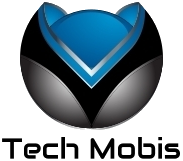
The recent decades have brought an overwhelmingly huge amount of various technologies into every aspect of our lives. They are implemented in every field of human activity, improving it and making our lives easier and more productive. One of the most important spheres – the education couldn’t be avoided.
For example, children love to play browser games. So, teachers need to take this into account and understand the peculiarities of each game, including their benefits. They should also review the best examples of educational browser games.
Teacher’s Glance Over Tech

Is it true, that technologies have been only beneficial to the educational process as a whole and teachers as a unit of it? Well, this is quite a controversial point. While the technologies have brought many improvements and changes to how we imagine learning process, they have also brought some negativity.
It all started by providing students with more complicated and universal cheating tools and distraction objects. This all mayhem have evolved from just students using phones to development of essay writing platforms (thanks to the development of almighty Internet) that provides students with an option to pay for coursework. However, all of those harmful effects are negated by the overall positive outcome of the technologies usage in the learning process. Especially, if we are talking about this from the teachers’ viewpoint.
The first real big shot was the introduction of the presentations. Those combinations of pictures and short sentences have stood the test of time and proven that they are the natural way of lecture evolution. The presentations provide teachers with an ability to complement their lecture with some visual (most of the time) content.
The presentations are divided into slides that reflect the corresponding part of the lecture, adding visualization for it and the minimum level of interactivity to the previously dry lection. When before students had to image the subject the teacher is talking about, now they just looked up to bind the information with its visual representation. This had increased the level of students’ involvement and interest levels in those lessons, that were using presentations. It goes without saying that the students remember more, as more sensors were active during the lecture.
Many other technologies have become viable to be used in the education process. The following technologies are approved by many teachers and education ministries around the world:
- multi-boards (those new and fancy chalkboards, that are actually a huge screen, where you can do basically everything, starting from just viewing some images to drawing complicated infographics in the real-time during the lesson);
- laptops and personal computers (their usability is the ultimately universal, as they are used for many purposes such as watching a movie in original of Language lessons or presenting creative projects etc.);
- smartphones (yeah, they are quite useful in the right hands. Today, they are mostly used for performing quick polls and alerting the students (and their parents) about their homework, creating events and reminders in regards to the studying process);
- emails (as the best way to perform any way of communication, including reporting home tasks to your teacher, asking for information regarding various issues in the home task etc.);
In the end, the technologies did penetrate the education process. They have fused with every aspect of it, improving and implementing them. Despite all the conservatives saying the opposite, the technologies have proven to be a valuable asset in the evolution of the education.







